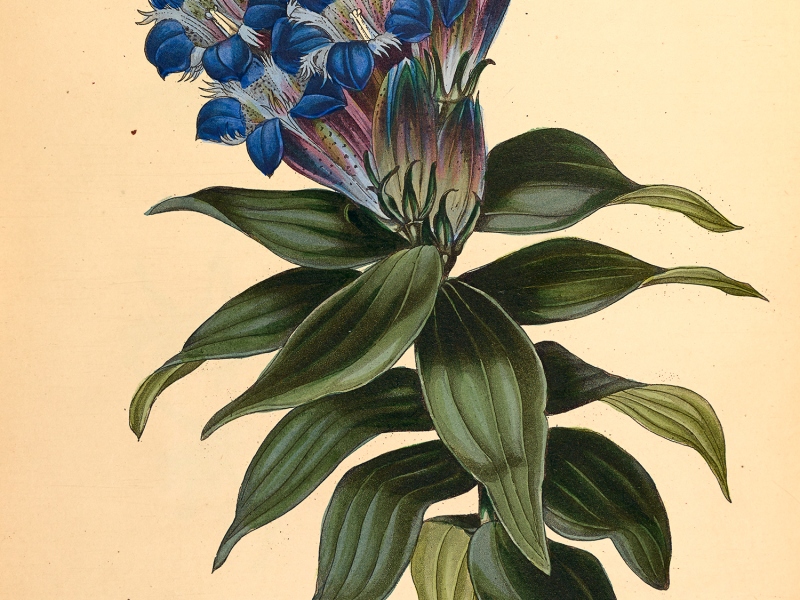
Author: Louis Van Houtte, ed.
Publication date and citation: 1851–52, Vol. 7, between pages 24 and 25
View this entire book at our digital library.
Art and Science in the Garden for the World features reproductions of historic plant illustrations selected from our library’s own rare book collection. Each work of art showcases a region of the world where Garden scientists are currently working to discover, study, and conserve plants.

Introduction
The Missouri Botanical Garden, established in 1859, the same year that Charles Darwin’s On the Origin of Species was published, continues to be among the world’s most active and productive botanical research institutions. At its core the Garden’s research program focuses on naming and describing the world’s plant diversity. Our goal is to understand and communicate the deep complexities and relationships of plants and to develop ways to protect and conserve them and the ecosystems they inhabit now and into the future. The Garden’s research staff is working tirelessly to discover new species and contribute new information so that we are better able to manage and conserve our world’s plant biodiversity.
Underlying the Garden’s research activities are two indispensable resources: the Herbarium, containing over 6.5 million specimens, and the Peter H. Raven Library, holding over 200,000 volumes. The holdings of both the Herbarium and Library are among the largest and most comprehensive botanical research collections in the world. The Library’s rare book collection, dating back to 1474, contains over 6,500 titles published before 1825 and includes volumes of great rarity, artistry, and scientific value.
The scope and influence of the Garden’s research is globally significant, with major programs in Central America, Andean South America, Africa and Madagascar, and parts of Asia. The 11 panels on display represent the geographic regions where the Garden has collaborative research activities and provides a glimpse into the 90 countries touched by our work. The large illustrations have been reproduced from volumes in the Library’s rare book collection dating back to the 18th century.
The Victoria amazonica water lilies being grown in this 19th century conservatory in Europe are emblematic of the tremendous interest in new and exotic plant species characteristic of a period in which many large and elaborate florilegia were published.
Click on the images below to learn more about the Garden’s research activities around the globe.










